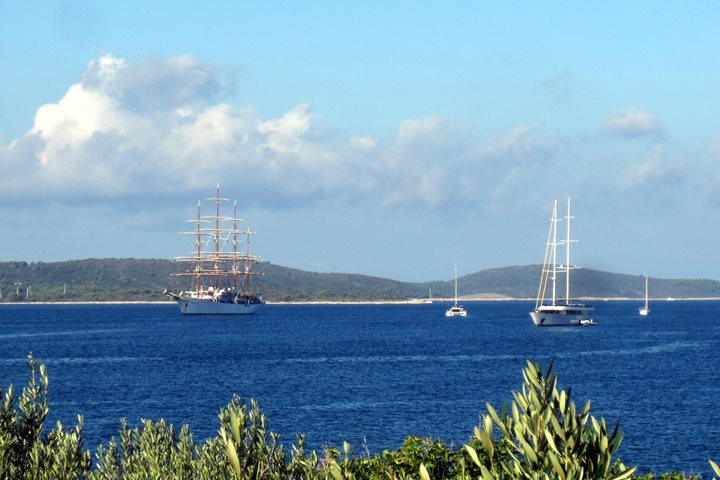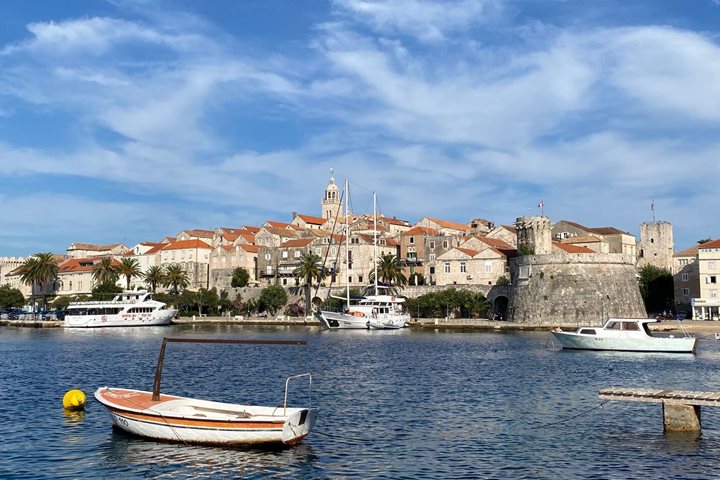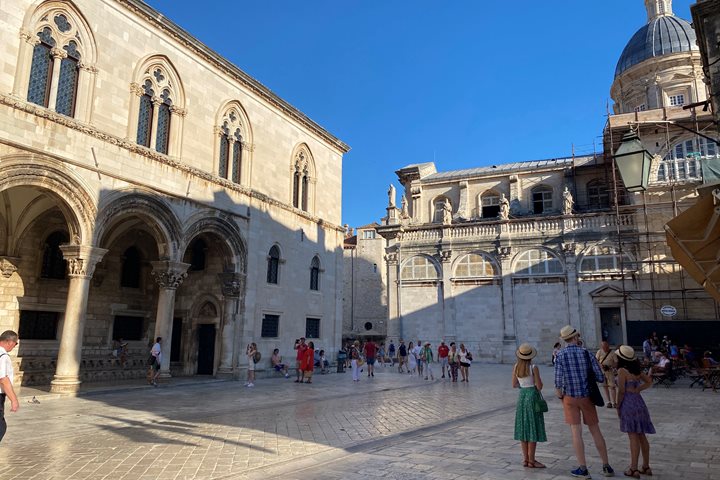Our day began as Sea Cloud approached the Croatian island of Hvar, an important Venetian outpost during the medieval era. This beautifully wooded island, prized throughout history for its shipbuilding timber, was a lovely morning stop on the final day of our voyage. Today the island is better known for rosemary, figs, and in particular lavender, the scent of which wafts delicately through the main square of town. We began with a guided walking tour of the picturesque town of Hvar, the name of which is derived from the Greek name Pharos. We spotted the winged lion of St. Mark—state propaganda of the Venetian Republic—throughout the town, which was under Venetian control for several hundred years. Our tour included the loggia, remains of the medieval pier, and the Franciscan monastery, with its splendid painting of the Last Supper and an oddly shaped, 500-year-old cypress tree (Cupressus sempervirens). We ended our tour at the Cathedral of St. Stephen before free time in town, which some spent shopping in the island’s many charming shops, while others enjoyed a walk through the wooded park adjacent to the old town. After returning to the ship and indulging in chef Maik’s famous parmesan pasta wheel, we had one final afternoon of sailing, accompanied by a lecture on the stranger-than-fiction Fourth Crusade, which was a major event that influenced life in the Balkans in the 13th century and beyond.
9/23/2024
Read
Sea Cloud
Hvar, Croatia
On the last day of our voyage, we spent the morning on the lovely island of Hvar, known for its fragrant fields of lavender and rosemary. Our walking tour started with the Franciscan monastery, featuring a centuries-old cypress tree and a 17th-century painting of the Last Supper attributed to Matteo Ponzoni. We continued on to tour one of the oldest community theaters in Europe (dating to 1612), the Hvar Arsenal (instrumental in building and repairing Venetian ships), and the town’s stone buildings which often feature the winged lion of St. Mark. This afternoon, after a lunch featuring the famous Sea Cloud pasta wheel, we enjoyed a lecture by cultural specialist Zrinka Šapro on the history of Croatia, focusing on the 20th century. Hearing about the rule of Josip Broz Tito and the wars of the 1990s from someone with personal experience was a particularly fitting conclusion to our tour of this region so rich in history. Our final evening aboard included a cocktail hour and the guest slide show on the lido deck, followed by the captain’s farewell dinner in Sea Cloud’s elegant dining room, after which we bid our travel companions and newfound friends a fond farewell.









